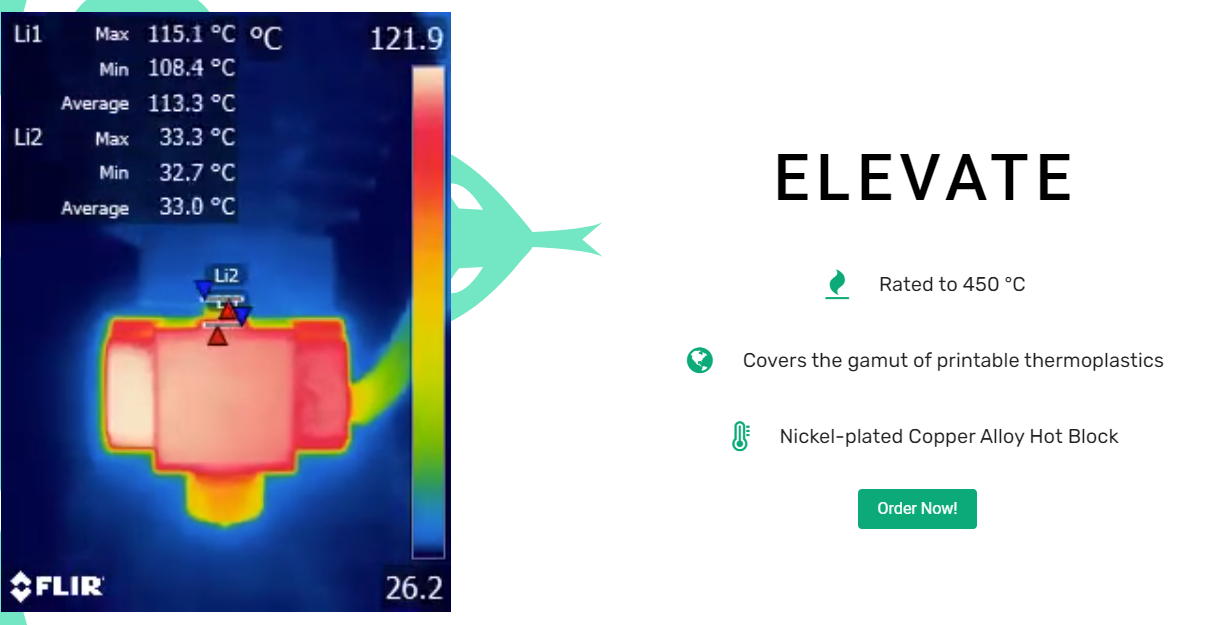Printing Metal with FDM?
-
Currently, processes from desktop metal and markforge require buying a sintering oven to do that. Able to directly print metal on an FDM printer will definitely be awesome and game-changing. Slice engineering's copperhead hotend can go up to 450 C and some welding filaments for aluminum melts at 600 - 650 C. I wonder in theory if there is a hotend that can reach that temperature, will it be possible to directly melt and print metal welding filaments that way? I guess the finished part doesn't need to compete with machining and casting strength but still could be way better than most plastics.

-
There are a number of challenges, some simple, some less so:
You need a better temp sensor (most RTD's don't go much past 450C), easy, use a K type thermocouple.
The strength of the copper is probably an issue at that high a temp... But steel or even tungsten are options.
Then the bigger problems:
Aluminium is a great thermal conductor, using it as its own piston (the way FDM works) isn't going to work.
Molten aluminium has low viscosity. Not so much extruding as pouring.
If its not molten, you can extrude it, but its not going to bond together.Really big problems:
Assuming its molten and you somehow manage to control it, you need it to cool down enough to stay there. But if it cools down you are going to end up with your part cooling at different rates. This can cause both thermal stress and potentially cracking, but things like porosity and other welding issues.
At a minimum you are going to need to heat-treat the results.
Vader systems started out trying to do this at least 8 years ago. They eventually came up with a really cool way of basically making an electromagnetic inkjet nozzle that sprays aluminium.
I don't know if they figured out what to do about the thermal stress and other deposition issues, but they got bought by 3D Systems iirc, so we may never know.If you do some googling you will see that some RepRap contributors did tests with low temp alloys about 7 or 8 years ago... Its not too hard to put together an alloy that melts at 200C.
They had issues like the alloy eating the nozzle (turns out brass was a bad choice), but the results were not interesting enough for it to go much further.If you really want to go down the low cost route check out the following:
Cold Spray:
Originally developed in the USSR, out of patent iirc, room temp deposition of basically any metal, just needs pressurised gas and a supersonic nozzle. You have to deal with powered metals in the air, which is very non-trivial, but you can get really high deposition rates! AT ROOM TEMP! Solid metal parts at the end! Its used in aerospace to do things like repair cracks in titanium.Fabrisonic:
iirc, now out of patent, ultrasonic bonding of metal film/ribbon. They then cnc away the unwanted material. Not commerically successful that I'm aware, as its more expensive and slower than milling, with very limited advantages. But its room temp deposition of metals and it might scale down.TL:DR
FDM metal isn't technically very viable. But there are other options worth exploring.
-
@theruttmeister Learned a lot. Thank you so much for this comprehensive answer!
-
@Ray11
No problem.
If you haven't already, go read some of the old reprap blogs, especially hydraraptor/nophead. An awful lot of stuff got tried out in the early reprap days.
And Nophead never gets enough credit for the Mendel90 design. -
Another tool in the tool chest, so to speak, is debinding and sintering BASF Ultrafuse 316L
https://www.ultrafusefff.com/product-category/metal/ultrafuse-316l/
https://www.matterhackers.com/store/l/basf-ultrafuse-316l-metal-composite-3d-printing-filament-175mm/sk/MRDKJRRSHow-to-ish here
https://www.matterhackers.com/support/how-to-succeed-with-3d-printing-metal-on-a-desktop-3d-printer -
@sebkritikel
I'm looking forward to sub $10k setups for home de-binding and sintering.
Heck you can probably get that already from China. -
this has been done a few times, using metal welding wire as a substrate:
https://hackaday.com/2020/03/31/3d-metal-printer-uses-welding-wire/
https://www.youtube.com/watch?v=odGEzRRDfxo&ab_channel=AdrianGerlichsome even professionally
https://www.youtube.com/watch?v=DKkcBoSeUOg
https://www.youtube.com/watch?v=cKxatmf11D4This method claims to be able to use any wire that heats enough electrically to melt:
https://www.digitalalloys.com/technology/
(so presumably any wire given a high enough voltage, current and thin enough wire) (and a non oxidising atmosphere)but as @theruttmeister points out there are lots of challenges. For many metals you will want a non oxidising atmosphere as well.